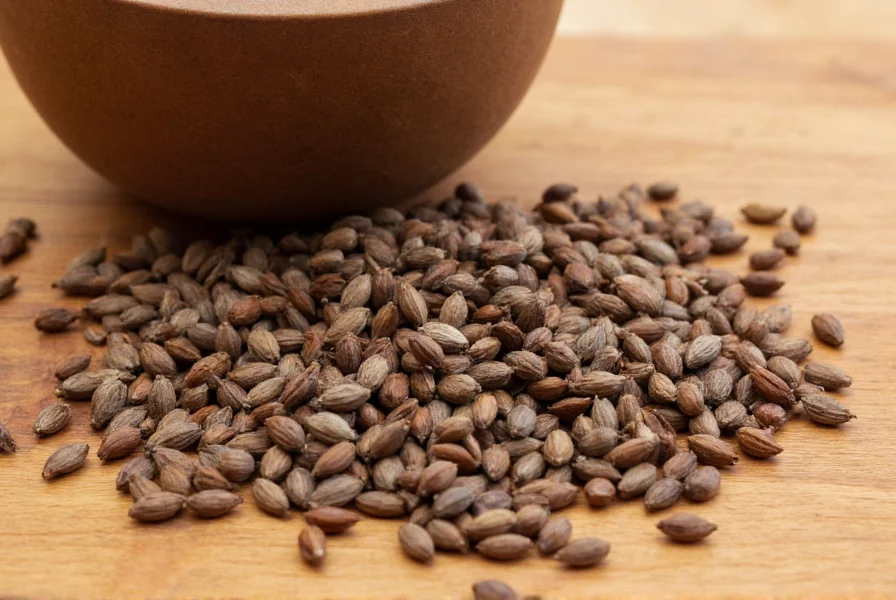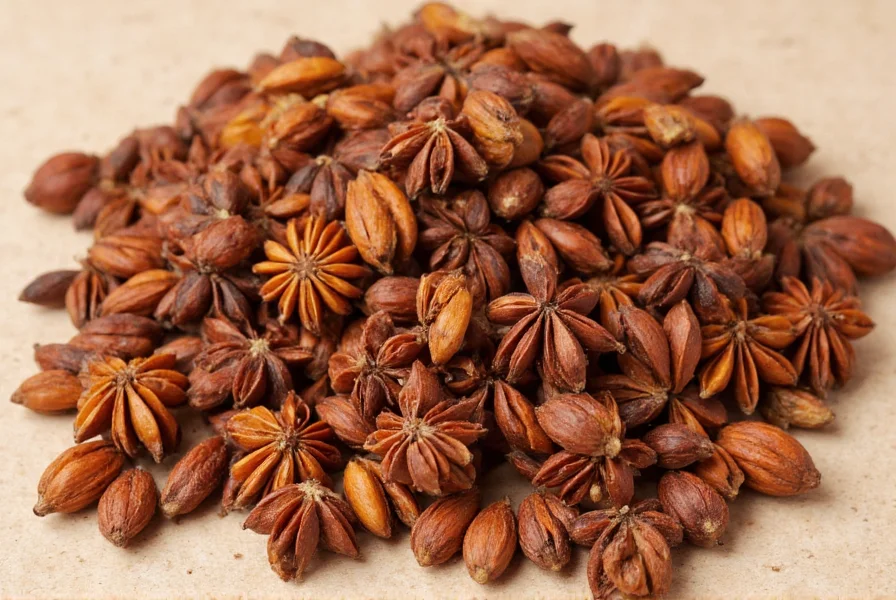Anise has captivated palates and healers for millennia with its distinctive sweet, aromatic profile. This small, grayish-brown seed comes from a delicate annual herb that grows up to two feet tall, producing伞-shaped flower clusters that yield the valuable seeds we use in kitchens and apothecaries worldwide. Understanding what is anise spice reveals its importance in global culinary traditions and traditional medicine systems.
Botanical Characteristics and Historical Origins
Anise (Pimpinella anisum) belongs to the same plant family as carrots, celery, and parsley. The plant features feathery leaves and produces small white flowers that develop into crescent-shaped seeds containing 2-6% essential oil, primarily composed of anethole (80-90%). Historical evidence shows ancient Egyptians cultivated anise as early as 1500 BCE, while Roman naturalist Pliny the Elder documented its digestive benefits. During the Middle Ages, anise became a staple in European monastic gardens and apothecaries.
| Property | Details |
|---|---|
| Scientific Name | Pimpinella anisum |
| Family | Apiaceae (Umbelliferae) |
| Native Region | Mediterranean and Southwest Asia |
| Primary Flavor Compound | Anethole (80-90% of essential oil) |
| Harvest Season | Late summer to early autumn |
Culinary Applications Around the World
The anise flavor profile makes it indispensable in numerous global cuisines. In Mediterranean cooking, bakers incorporate ground anise seeds into biscotti, pizzelle, and Greek breads. Middle Eastern chefs use whole aniseed in spice blends like baharat and in marinades for lamb dishes. Mexican cuisine features anise in traditional atole (a warm corn-based beverage) and certain mole sauces. The difference between anise and star anise becomes particularly relevant in Chinese five-spice powder, where star anise predominates while regular anise plays a supporting role.
When exploring anise seed uses in cooking, consider these applications:
- Add whole seeds to braising liquids for meats
- Infuse milk or cream with anise for custards and ice creams
- Combine with citrus zest in cake batters
- Use in pickling brines for vegetables
- Enhance fruit compotes and jams

Medicinal Properties and Traditional Remedies
Traditional medicine systems have long valued anise for its therapeutic properties. The health benefits of anise include digestive support, as the essential oils help relax gastrointestinal muscles and reduce bloating. Clinical studies suggest anise may possess mild estrogenic effects, potentially helping alleviate menopausal symptoms. Its antispasmodic properties make it useful for cough syrups and throat lozenges.
When preparing anise tea for digestive relief, use one teaspoon of crushed seeds per cup of boiling water, steeped for 10 minutes. This simple preparation demonstrates practical anise medicinal properties. However, pregnant women should consult healthcare providers before consuming therapeutic amounts, as high doses may stimulate uterine contractions.
Distinguishing Anise from Similar Flavored Spices
Many people confuse anise with star anise and fennel, though they come from different plant families. True anise (Pimpinella anisum) produces small, oval seeds, while star anise (Illicium verum) features a distinctive eight-pointed star shape. Fennel seeds are longer and greener than anise seeds. The difference between anise and star anise extends beyond appearance—star anise contains shikimic acid, making it valuable in pharmaceutical production, while anise contains higher concentrations of anethole.
When substituting these spices, remember that star anise has a more intense, slightly bitter flavor compared to the sweeter anise. For most baking applications, anise seed works better than star anise, which can overpower delicate recipes. Understanding these distinctions helps when following international recipes that specify one or the other.
Practical Tips for Using Anise in Your Kitchen
Mastering how to use anise in baking requires understanding its potency. Whole seeds maintain flavor longer than ground anise, which loses potency within 6 months. For optimal flavor release, lightly toast whole seeds before grinding. When incorporating anise into baked goods, pair it with complementary flavors like orange, chocolate, or almonds.
Chefs preparing Middle Eastern dishes often bloom anise seeds in hot oil before adding other ingredients to maximize flavor extraction. For homemade liqueurs like ouzo or arak, use 2 tablespoons of crushed anise seeds per 750ml of neutral spirit, allowing it to steep for 3-5 days before filtering.

Storage Recommendations and Quality Indicators
To preserve the volatile oils that give anise its distinctive flavor, store seeds in airtight containers away from light and heat. Properly stored anise seeds maintain peak quality for 1-2 years, while ground anise lasts only 6 months. Fresh anise should have a strong, sweet aroma and feel slightly oily to the touch. Dull, brittle seeds that lack fragrance indicate age and diminished quality.
When purchasing anise, look for uniform grayish-brown seeds without cracks or blemishes. High-quality anise will have a sweet, clean licorice scent without musty or bitter undertones. Organic certification can be valuable as anise readily absorbs pesticides from conventional farming practices.
Safety Considerations and Potential Interactions
While culinary amounts of anise are generally safe, concentrated forms may interact with certain medications. People taking tamoxifen for breast cancer should avoid therapeutic doses of anise due to potential estrogenic effects. Those with known allergies to plants in the Apiaceae family (like carrots or celery) may experience cross-reactivity with anise.
The European Medicines Agency recommends limiting anise essential oil consumption to no more than 200mg daily. When using anise medicinally, consult with a healthcare provider to ensure it won't interfere with existing conditions or treatments. For most people enjoying anise as a spice, these concerns don't apply to normal culinary usage.
Conclusion: The Enduring Appeal of Anise
Anise continues to earn its place in kitchens and medicine cabinets worldwide through its unique flavor profile and versatile applications. From ancient Egyptian tombs to modern molecular gastronomy, this humble seed has maintained relevance across civilizations. Whether you're exploring traditional anise seed uses in cooking or investigating its potential health benefits of anise, this spice offers a bridge between culinary pleasure and potential wellness. As food traditions continue evolving, anise remains a testament to how ancient botanical knowledge can inform contemporary practices.
Frequently Asked Questions
What is the difference between anise and star anise?
Anise (Pimpinella anisum) produces small, oval seeds with a sweet licorice flavor, while star anise (Illicium verum) is a star-shaped fruit from a completely different plant family. True anise contains higher concentrations of anethole (80-90% of essential oil) compared to star anise. They're not interchangeable in recipes—one teaspoon of ground anise equals about half a star anise pod due to intensity differences.
Can I substitute fennel for anise in recipes?
While fennel and anise share similar flavor compounds, they're not perfect substitutes. Fennel has a milder, slightly grassier flavor compared to anise's intense sweetness. In savory dishes, you can use a 1:1 substitution, but in baking, use ¾ teaspoon fennel for every 1 teaspoon anise required. For authentic Mediterranean or Middle Eastern recipes, true anise provides the distinctive flavor profile these cuisines require.
How should I store anise to maintain freshness?
Store whole anise seeds in an airtight glass container away from light and heat. Proper storage preserves the volatile oils for 1-2 years. Ground anise loses potency more quickly (6 months maximum). To test freshness, crush a seed between your fingers—if the aroma is strong and sweet, it's still viable. Avoid plastic containers as anise oils can degrade plastic and absorb off-flavors.
Does anise have any scientifically proven health benefits?
Research shows anise may help with digestive issues, cough suppression, and potentially menopausal symptoms due to mild phytoestrogenic effects. A 2012 study in the Journal of Ethnopharmacology found anise effective for reducing cough frequency. However, most evidence comes from traditional use and preliminary studies—more rigorous clinical trials are needed to confirm therapeutic applications beyond culinary use.
Why does my anise bread not taste strongly of anise?
Anise flavor diminishes with heat exposure. To maximize flavor in baked goods, add ground anise during the final mixing stage rather than at the beginning. Alternatively, toast whole seeds lightly before grinding to release more essential oils. Using anise extract (½ teaspoon) in addition to seeds can boost flavor. Remember that anise pairs well with citrus zest, which can enhance its perceived intensity in finished products.











 浙公网安备
33010002000092号
浙公网安备
33010002000092号 浙B2-20120091-4
浙B2-20120091-4